Average sizes and life expectancy for this breed:
The Lhasa Apso is native to Tibet, where they became popular as effective watchdogs in palaces and monasteries. Today, these alert, willful small dogs are loved for their devotion to their owners, as well as their luxurious flowing coats.
Because of their history as watchdogs, Lhasa Apsos tend to be wary around strangers. This is not a dog breed that will invite a burglar into the home and show him where to find the silver. They are affectionate with family members but independent enough to not require constant attention.
When the Lhasa Apso first arrived in the United Kingdom in the 1920s, they were an instant hit and remain a firm favourite to this day.
These charming canine companions are fun-loving and affectionate dogs who take pride in their charismatic appeal. They make good family pets, however, they are better suited to families with older children.
Lhasa Apsos are lively, playful, and sometimes mischievous dogs which just adds to their appeal. They are also highly intelligent and often compared to a willful toddler. If you are looking for an independent, loyal, fun companion, the Lhasa Apso may be the breed for you.
See available puppies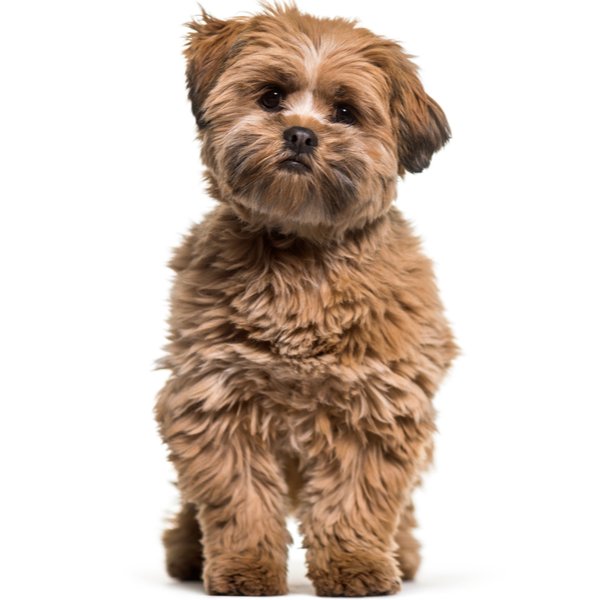

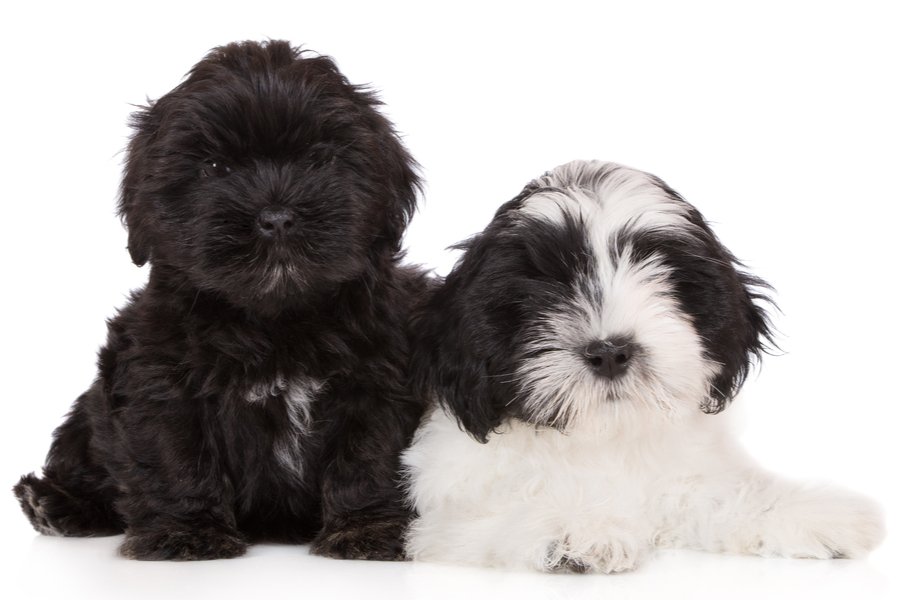


The Lhasa Apso originated in the Himalayan Mountains of Tibet hundreds of years ago. Their broad muzzles and large lung capacity allowed them to cope easily in terrain that was 13,000 feet above sea level.
They are known as one of the 14 most ancient dog breeds according to the American Kennel Club. Named after the sacred city of Lhasa, these dogs were bred to act as watchdogs for monasteries, temples, and palaces thanks to their loud, sharp barks. Furthermore, for a long time, they were only bred and produced in Tibet by holy men and nobles.
These dogs were even considered to be sacred. Local tribes believed that when a master died, their soul would enter their Lhasa Apsos’ body for a short time while they awaited reincarnation into a new body. When the Lhasa Apso died, a baby was identified as the reincarnation of the dog’s master.
These beautiful dogs were rarely sold during this period, but they were offered as gifts to privileged and deserving people. Those gifted with a Lhasa Apso felt deeply honoured because these dogs were prized for being “bringers of good fortune”.
In the 1900s, Lhasa Apsos were finally imported into England. They arrived in America in 1930. In the beginning, there was some confusion as to whether the first dogs that arrived in England were Lhasa Apso or Tibetan Terriers. In fact, during this time, both dog breeds were categorised as one breed known as either the Thibetan, Bhutan, Bhuteer, or the Lhassa Terrier.
In 1908, the Lhasa Apso was finally awarded Championship status, but they were exhibited in classes depending on their size. In 1934, the Tibetan Breeds Association was established to finally separate and create a clear distinction between the different dog breeds with Tibetan origins.
Due to World War II, their numbers fell dangerously low, so breed enthusiasts started importing dogs from Tibet. As a result, by the mid-1950s, their numbers had risen substantially. In 1956, the Lhasa Apso Club in the United Kingdom was approved by the Kennel Club. In 1959, the breed was renamed Tibetan Apso and, in 1965, was awarded championship status.
The breed’s name was changed back to Lhasa Apso in 1970. In 1973, the breed standard was reviewed and revisited to establish the standard we know today.
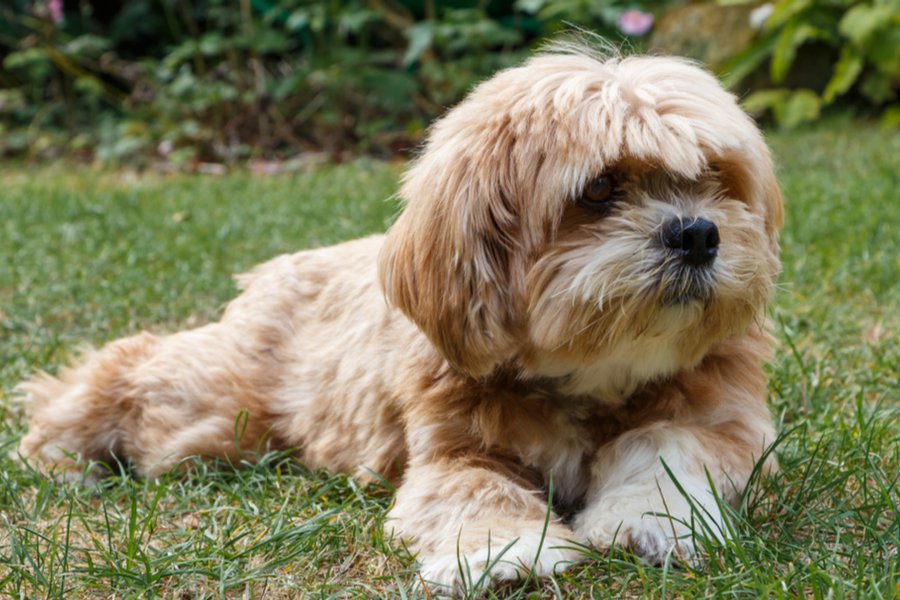
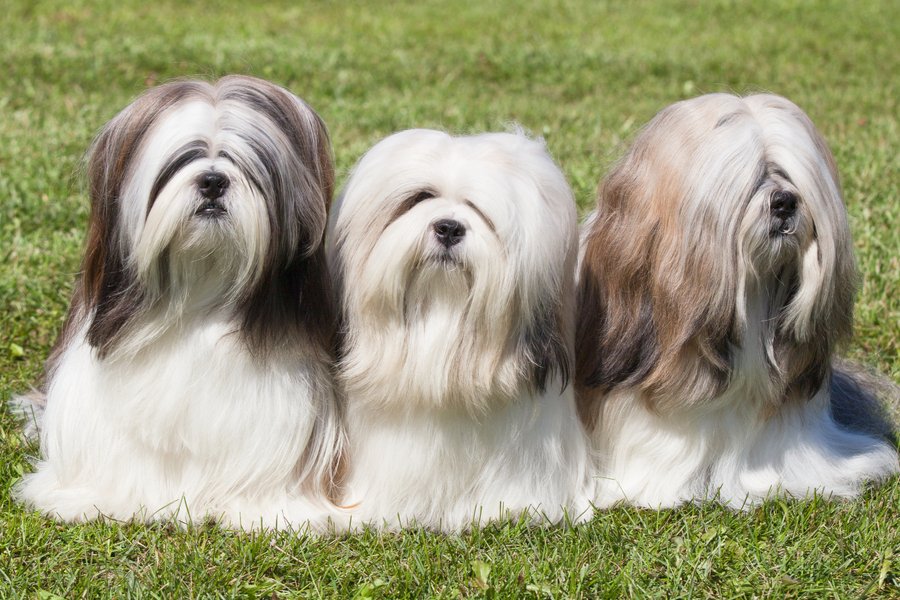
Lhasa Apsos are well-proportioned little dogs with plush, straight, long coats that are perfectly designed to withstand the harsh weather conditions of the mountains of Tibet. You will quickly notice that these dogs have a lot of hair over their eyes, but this should not interfere with the dog’s vision.
These little dogs have neat beards and full whiskers that contribute to their overall charming appeal. Their heads are somewhat narrow, and their skulls fall behind their eyes. Their stops are medium, and their noses are black in colour.
Their oval-shaped eyes are medium in size and dark in colour. Their well-feathered ears fall neatly on both sides of the head. Lhasa Apsos have a reverse scissor bite and strong jaws. Their strong necks are well-arched and fall on their well-laid-back shoulders. Their straight front legs are heavily feathered.
These charming dogs are compact-looking canines. Their ribs extend well down their bodies, and they have a good level topline. These dogs have strong loins that add to the balance of their overall appearance. Their hindquarters are well-muscled and well-developed, with good angulation and heavy feathering. They have cat-like feet with rounded, firm pads. Their well-feathered tails are set high and carried over their backs, often with a kink at the end.
The topcoat of a Lhasa Apso is long, straight, and heavy. They are neither woolly nor silky. Moreover, they have a moderate, softer undercoat.
The Kennel Club recognises the following breed colours: Dark grizzle, Smoke, Slate, Golden, Sandy, Parti-colour, Black, White, Brown and Honey.
The Lhasa Apso was originally bred to be a guard dog and a companion dog. So, they can be reserved with strangers. However, they are very affectionate and loving towards people they trust. They form strong bonds with their owners and families.
These dogs are known to be a little bit stubborn as they are generally independent by nature. As a result, they are possibly not the best choice for first-time dog owners because they need someone who will remain consistent and understand their unique needs.
Despite their small size, these dogs have a lot of stamina for long walks. Around one hour per day is recommended. They make great companions for families although they are not considered to be typical lapdog types like others of their size. These dogs are lively and full of energy!
Lhasa Apsos are generally aloof with strangers, which includes other dogs. So, they require plenty of socialisation from puppyhood. Expose them to a range of different sights, smells, people, and other animals to ensure they grow into well-rounded and well-adjusted adults.
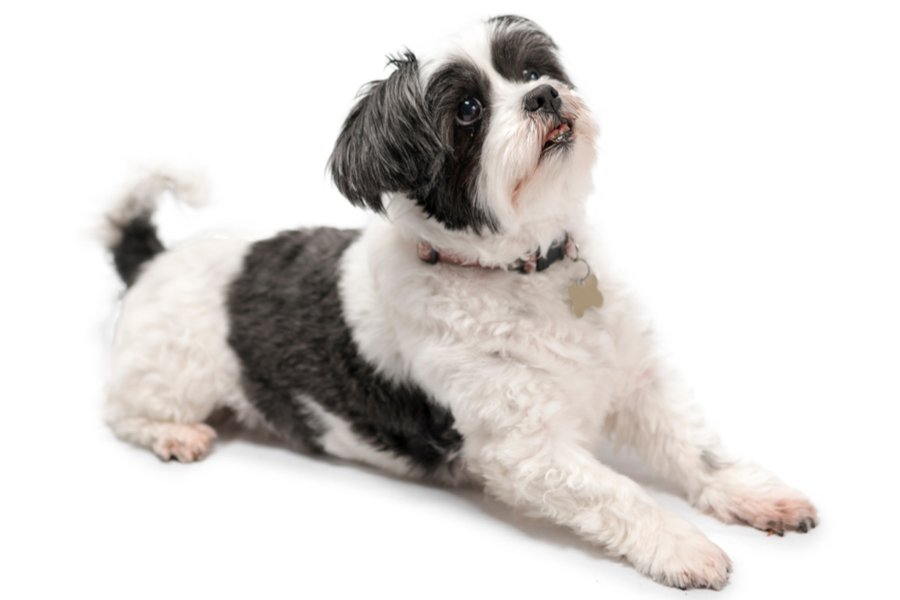
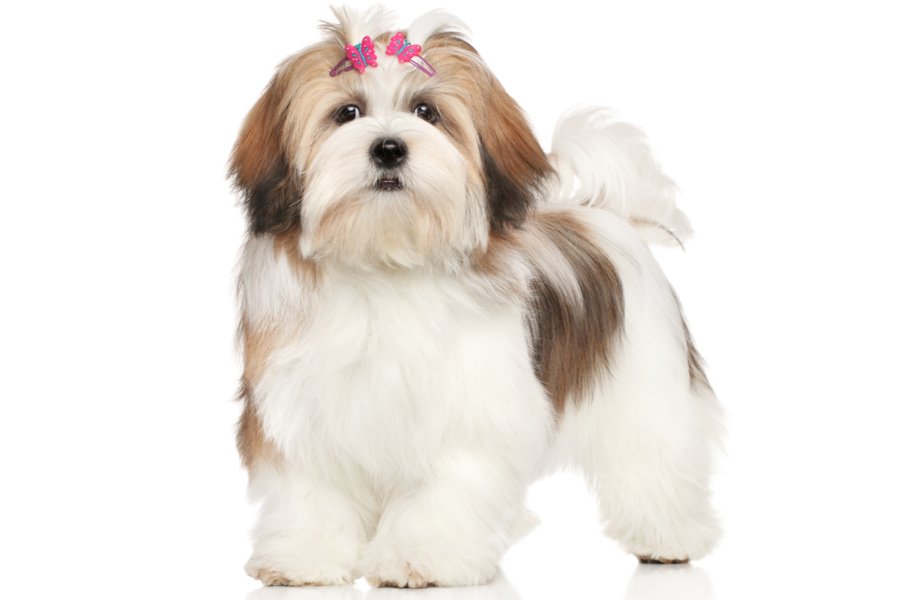
Lhasa Apsos are more like cats in the regard that they will only please you if it pleases them. These dogs are incredibly clever; however, they have been compared to persistent toddlers for a reason! Lhasa Apsos can learn anything you teach them, you just need to make all training sessions fun and engaging. They also respond very well to tasty treats and other forms of positive reinforcement, such as praise. If training becomes boring or repetitive, these dogs will quickly display their annoyance by becoming stubborn.
This is definitely a dog breed for creative, motivated people that are looking for a canine with a strong, independent character.
The Lhasa Apso breed has long, thick hair that requires daily brushing using a metal comb and a slicker brush to remain in good condition. They should also be bathed, trimmed, and groomed by a professional groomer every few weeks or once a month, depending on how dirty they get! Saying that, they can be bathed as often as once every two weeks, but you must make sure you use a shampoo that is suitable for a dog's sensitive skin. Rinsing them fully after a bath will also prevent the build-up of any shampoo residue which can cause irritation.
As an additional note, the use of conditioners and finishing sprays can make grooming a lot easier. However, they must be suitable and safe for canines. Freshly bathed hair (whether long or clipped) should be dried and brushed carefully because wet hair is prone to matting and tangling.
Regularly clean their ears using a clean, damp cloth with a vet-approved ear cleaner to remove dirt and wax buildup. You can also use cotton swabs to clean the edges of the ear canals but never on the inner ear as this can cause internal damage. Sometimes, their outer ears can become dry. If this happens, you can use mineral oil or baby oil to moisturise them.
Not all dogs will readily accept nail trimming. So, it is advisable to start getting them used to it from an early age. Should it become a challenge, you can have a professional do it. It is vital to keep their nails trimmed as very long nails can cause tearing and splitting that can be painful for your Lhasa Apso. Inspect their paw pads as you clean their nails to make sure they are healthy, as well as dirt and injury-free.
For their dental health, daily brushing is still best to prevent your dog from developing tooth and gum disease. However, brushing them at least two times a week is sufficient enough to prevent tartar and bacteria buildup.
As you groom your Lhasa Apso, examine their body for any signs or symptoms of infection such as swelling, sores, tenderness, rashes, or irritation. Their eyes must be clear and free from redness and discharge.
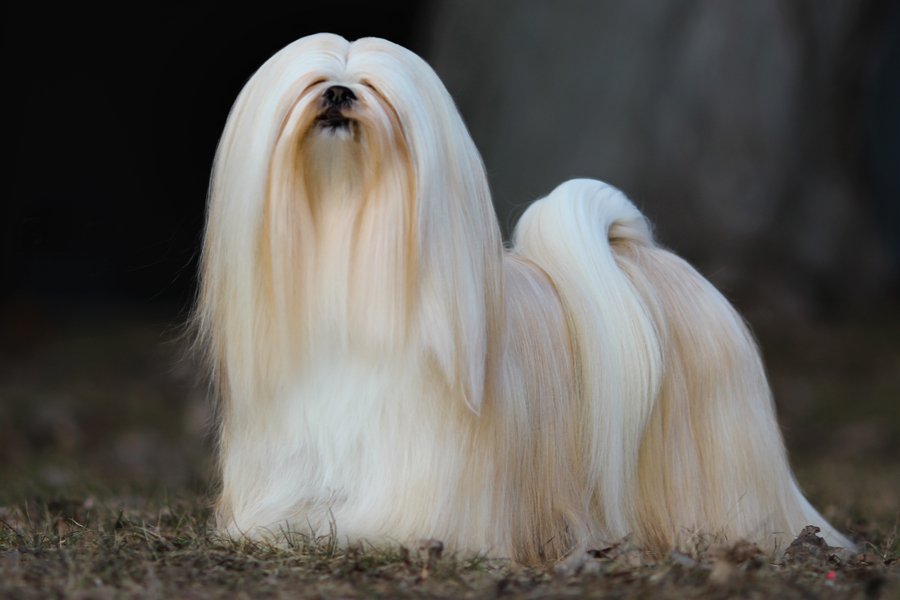
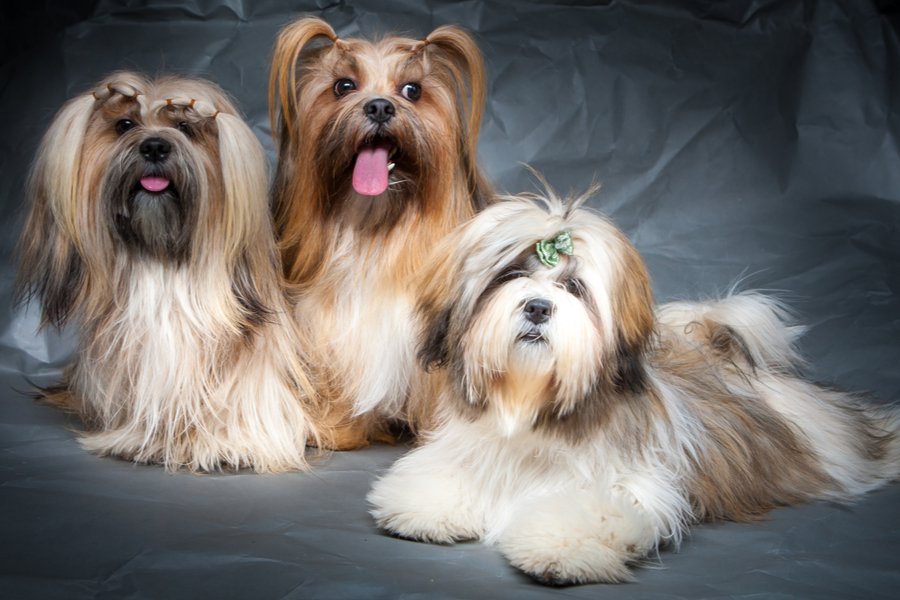
Lhasa Apsos are generally robust and healthy dogs. However, they can develop certain debilitating health conditions, just like other dog breeds, especially as they get older. Only purchase puppies from reputable and licensed breeders who will be able to perform DNA tests to check for any underlying health conditions. You should also schedule regular checkups with your vet to keep them healthy well into old age.
Some of the health issues seen in Lhasa Apsos include:
Lhasa Apsos are best matched to homes with older children who know how to treat them properly. Lhasa Apsos are not best suited to homes with toddlers who may mishandle them. Saying that, it’s essential that you monitor all interactions between dogs and children to prevent any incidents from occurring. You should also make sure you teach your children how to appropriately handle and approach a dog.
If they are properly socialised and trained, Lhasa Apsos can get along with other dogs. However, it’s worth remembering that these dogs are naturally wary of strangers. So, introductions should always be done slowly and with caution.
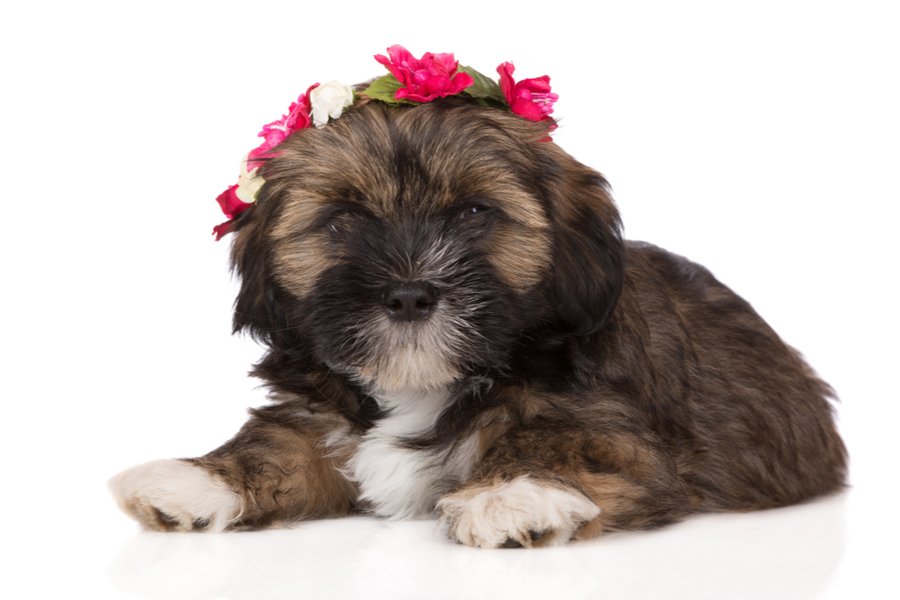
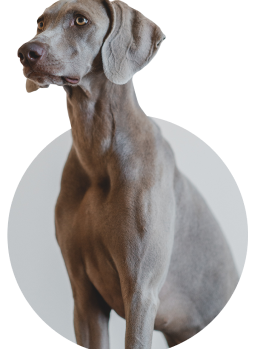
We can connect you with Breeders that are specialized in this particular breed.
See available puppies

Need some advice?
Whether you're a first time pet owner, an experienced pet owner, a new or long-time breeder, or just curious about pets, we've got you covered!

January 17, 2024
What Is The Personality Of Russian Blue Cats?
Russian Blue cats are most known for their distinctive shimmery blue-silver coat and piercing green eyes. However, this breed’s calm and gentle temperament is what makes them shine the most in the feline world.

January 17, 2024
10 Facts About Russian Blue Cat Breed
Russian Blues are one of the most aesthetically stunning cat breeds, with a gorgeous plush silvery coat and vibrant green eyes. However, it’s not only their appearance that is beautiful; their nature is too.

January 17, 2024
How To Choose The Right Cat Breed for You
Cats can make the most fantastic animal companions; they are adorable, friendly, and loving. However, not all felines are created equal. There are many different breeds, of which each has its unique personality traits.
Need some help?
Contact us to speak to our friendly advisor, who will gladly help you find your dream pet!



We are registered in England and Wales under registration number 12568840,
and our registered office is at 58-60 Kensington Church Street, W8 4DB London, England.
© 2023 The Pedigree Paws